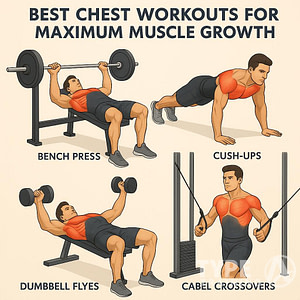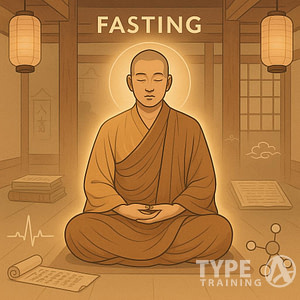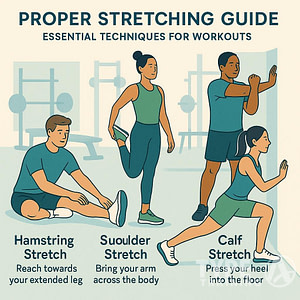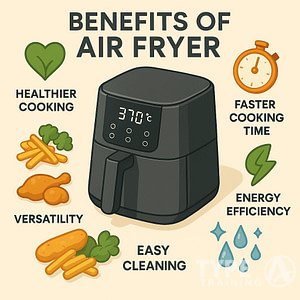Staying fit while traveling can be challenging, but it’s entirely possible with a bit of planning and creativity.
Integrating travel and fitness into your routine can lead to a healthier lifestyle, allowing you to enjoy your adventures while staying fit.
Incorporating short, high-intensity workouts such as burpees, mountain climbers, or stair runs can be especially effective. You don’t need a gym—you can use hotel rooms, parks, or even your Airbnb space to get moving.
Finding opportunities for travel and fitness can turn your journey into an active experience, making it easier to stay committed to your goals.
Popular posts:
Maintaining your fitness routine also benefits your mental health and overall wellness. Whether you’re traveling for work or pleasure, consistency in your fitness goals can provide a sense of stability.
Remember, travel and fitness go hand in hand, creating a balanced approach to health even when you’re far from home.
Consider packing portable fitness gear like core sliders or resistance bands. They don’t take up much space but can enhance your workouts significantly.
Building your fitness plan around your travel schedule helps you stay committed. It’s about making workouts work for you rather than letting them be an added stress.
Travel and fitness require adaptability; find ways to make your workouts work for your travel plans.
For longer trips, investing in a short-term gym or yoga studio membership can be worthwhile. By staying active, you’ll find that your energy levels remain high and your travel experiences more enjoyable.
By combining travel and fitness, you can explore new locations while maintaining your physical activity levels.
Establishing a Fitness Routine on the Go
Maintaining your fitness routine while traveling requires strategic planning and choosing exercises that fit your schedule. This ensures you stay on track with your fitness goals despite a busy itinerary.
Travel and fitness become easier with the right mindset and preparation, ensuring enjoyable and active adventures.
Travel and Fitness: Finding Balance While Exploring
Assessing Your Travel Schedule for Workout Opportunities
Integrating travel and fitness routines helps ensure you don’t lose your progress during trips.
Begin by evaluating your daily travel itinerary to identify potential windows for exercise. Look for gaps between meetings, sightseeing, or other activities.
Even a 15-minute break can be enough for a quick workout. Early mornings or late evenings often provide uninterrupted time for fitness routines. Consider using hotel gyms or nearby parks for your exercise needs.
Choosing the Right Workouts for Travel
Keep in mind that travel and fitness are about making the best of your environment, no matter where you are.
Opt for workouts that require minimal equipment and space. Bodyweight exercises, such as push-ups, squats, and lunges, are ideal. High-Intensity Interval Training (HIIT) is another excellent travel workout, offering maximum results in a short period.
Consider downloading fitness apps that provide guided workouts suitable for various fitness levels. Utilize resistance bands as they are lightweight and portable, making them perfect for travel workouts.
Setting Realistic Fitness Goals While Traveling
Adjust your fitness goals to align with the realities of your travel schedule. Aim to maintain your current fitness level rather than striving for significant progress. Set achievable targets such as daily step counts or completing a set number of workout sessions during your trip.
Balancing travel and fitness leads to a fulfilling journey, allowing you to enjoy sights while staying active.
Embrace flexibility in your routine. If you miss a planned workout, don’t stress; instead, focus on making the next one count. Realistic goals help maintain momentum and ensure you remain committed to your fitness routine.
Adapting Workouts to Limited Spaces and Equipment
Finding ways to merge travel and fitness can motivate you to stay healthy, irrespective of your travel itinerary.
Adapting your fitness routine to small spaces and limited equipment requires creativity and flexibility. Here, you will find specific exercises and techniques to maintain strength and endurance while on the go.
Adapting your approach to travel and fitness can make workouts more engaging and enjoyable.
Hotel Room-Friendly Exercises
When you’re in a hotel room, space is often a constraint, but you can still perform effective workouts.
Squats are excellent for targeting the lower body, requiring only a small area. Push-ups can be done anywhere and challenge both your chest and core muscles.
For a full-body workout, burpees combine a squat, push-up, and jump, maximizing calorie burn in a compact space. Consider planks and side planks for core strength; they need minimal room and no equipment. Using the edge of the bed or a chair for tricep dips is another effective way to target the arms.
Equipment-Free Exercises for Maximizing Space
Maximizing a small area involves choosing exercises that utilize multiple muscle groups.
High knees and mountain climbers are great for cardio and require no equipment.
Incorporating travel and fitness into your daily routine helps keep your energy levels high and your mind clear.
Focus on bodyweight squats to build leg strength and lunges for improving balance and core stability. Push-ups and variations like diamond push-ups work your upper body and triceps.
Embracing the combination of travel and fitness allows for a holistic approach to maintaining your well-being.
Incorporate jumping jacks and burpees for a high-intensity interval training (HIIT) component to burn calories quickly. Don’t forget stretching exercises like dynamic stretches and yoga poses to maintain flexibility, all achievable with no equipment.
Utilizing Bodyweight for Strength and Endurance
Remember that travel and fitness don’t have to be at odds; they can complement each other beautifully.
Bodyweight workouts are powerful tools for building strength and endurance without needing any gym equipment.
Pull-ups using a sturdy door or a pull-up bar engage the back, shoulders, and arms.
Squats and lunges enhance lower body strength, while push-ups and dips develop upper body muscles. Planks and mountain climbers target the core, improving stability and endurance.
For a full-body routine that tests both strength and cardiovascular capacity, incorporate burpees. To create a balanced workout, aim to mix these exercises, ensuring all major muscle groups are engaged, helping you stay fit even in the most confined spaces.
Optimizing Nutrition and Recovery While Traveling
Maintaining a balance between travel and fitness ensures you return home feeling rejuvenated rather than fatigued.
Proper nutrition and recovery are crucial to maintaining fitness during travel. Consuming balanced meals and incorporating recovery techniques will help you stay on track.
Maintaining Healthy Eating Habits on the Road
Healthy eating and travel and fitness should go together, ensuring your body gets the nutrients it needs.
When traveling, prioritize balanced meals rich in proteins, healthy fats, and complex carbohydrates.
Bring nutritious snacks such as dried fruit, unsalted nuts, and no-sugar-added protein bars to avoid unhealthy food choices. Opt for fresh fruits and vegetables.
Hydration is vital. Always carry a reusable water bottle to stay hydrated and avoid sugary drinks. If eating out, choose grilled or steamed options over fried foods.
You can use an app to locate nearby restaurants that offer healthy choices. Another tip is to visit local markets to take advantage of fresh and often cheaper products.
Essential Recovery Techniques Post-Workout
Traveling shouldn’t mean skipping your recovery routines. Ensure adequate rest and rejuvenation by getting enough sleep, which aids muscle repair and overall wellness.
Incorporate stretching exercises to relieve muscle tension and improve flexibility.
Yoga classes, either virtual or in-person, provide both physical and mental health benefits. Light jogging or walking can help reach a daily goal of 10,000 steps while promoting cardiovascular health.
Don’t forget to incorporate activities like foam rolling or basic mobility exercises. These can enhance circulation and prevent stiffness from long travel periods. Adequate hydration plays a key role in muscle recovery too.
Incorporating Local Culture into Your Fitness Regime
Combining local culture with travel and fitness makes every journey more memorable and engaging.
Engaging with local culture while maintaining your fitness routine can enhance your travel experience. This approach allows you to explore cultural exercises and sports and discover local foods that can energize you while aiding in fat loss.
Exploring Cultural Exercises and Sports
Participating in local exercises and sports can be an exciting way to stay fit. Many regions have unique physical activities rooted in their culture.
For instance, in Japan, you might join a morning group practicing tai chi.
When you participate in cultural activities, you also enhance your travel and fitness experiences.
In Brazil, capoeira combines martial arts, dance, and acrobatics, offering a full-body workout. Exploring these activities not only keeps you active but also helps you connect with the local community.
Research the traditional sports and exercises of your destination before your trip. Check local community centers or parks for group classes. This not only diversifies your fitness regime but also provides insights into the local lifestyle and traditions.
Adapting Local Foods for Energy and Fat Loss
Local cuisines often include ingredients that can support your fitness goals.
For example, Mediterranean diets are rich in lean proteins, fresh vegetables, and healthy fats, which can boost energy levels and aid metabolism.
Incorporating local foods into your travel and fitness plan can lead to delightful culinary discoveries.
In Thailand, dishes often feature fresh herbs and spices that can elevate your energy and support fat loss.
Consider incorporating these foods into your meals rather than sticking to your typical diet.
Look out for markets to purchase fresh local produce. Experiment with local recipes that align with your nutritional needs. By doing this, you can enjoy the culinary culture of your travel destination while sticking to your fitness and health goals.
Specific Workouts for Frequent Travelers
Specific workouts tailored to travel and fitness can help you make the most of your time away.
Travel and fitness can be maintained through creative exercise routines, no matter where you are.
Traveling frequently does not mean sacrificing your fitness routine. High-Intensity Interval Training (HIIT), yoga, and targeted exercises can help maintain your momentum and keep you in shape.
High-Intensity Interval Training (HIIT) for Busy Schedules
HIIT is perfect for frequent travelers who have limited time but still want a potent workout.
- High plank to mountain climbers: Start in a high plank position and alternate bringing your knees to your chest. This targets your abs, shoulders, and glutes.
- Burpee with push-up: Begin standing, drop into a squat, kick back to a plank, perform a push-up, return to squat, and jump. This combination is great for your biceps and legs.
- Squat jumps: Perform standard squats but add a jump to engage your lower body further.
Yoga and Stretching for Travel Relaxation
Yoga and stretching are essential during travel to relax your body and mind. They can easily be performed on a hotel room floor with just a yoga mat.
- Morning routine: Start your day with a series of sun salutations to wake up your muscles and increase flexibility.
- Targeted stretches: Focus on areas prone to stiffness like the lower back and shoulders. Simple stretches such as seated forward bends or shoulder rolls can alleviate tension.
- Combination poses: Incorporating poses like downward dog with leg lifts can also work on your balance and engage your glutes and obliques.
Targeted Exercises for Muscles Prone to Stiffness
Targeted exercises during travel enhance your travel and fitness routine, ensuring you stay limber.
Prolonged periods of sitting while traveling can cause stiffness in specific muscle groups. Targeted exercises can help alleviate this discomfort.
- Leg lifts: Lie on your back and lift your legs to engage your lower abs and reduce stiffness in your legs.
- Jumping lunges: These work your lower legs and glutes, helping to keep your leg muscles active.
- Stretching neck and shoulder exercises: Performing neck tilts and shoulder shrugs can release tension accumulated during travel.
Frequently Asked Questions
Explore how to blend travel and fitness seamlessly for an enriching experience.
Explore strategies for maintaining your fitness routine while traveling. Learn about tips on portable equipment and effective workouts without any gear.
What are the best strategies for staying fit during business trips?
Maximizing your travel and fitness efforts will keep your routine exciting and effective.
Prioritize quick, no-equipment workouts such as push-ups, squats, and planks. Schedule workout time in your itinerary to ensure you stay committed. Opt for hotels with fitness facilities or nearby parks where you can exercise.
Which portable workout equipment is recommended for fitness during travel?
Consider packing resistance bands and lightweight dumbbells for versatile workouts. A jump rope can also be an excellent tool for cardio exercises. Foam rollers are useful for muscle recovery after workouts.
How can one perform effective workouts without any equipment while traveling?
Utilize the principles of travel and fitness to create a balanced and enjoyable workout regimen.
Bodyweight exercises like lunges, burpees, sit-ups, and push-ups are effective options. High-Intensity Interval Training (HIIT) routines can maximize your workout in short periods. Use public spaces such as parks for running or stair climbing.
What are the benefits of strength training during long travels?
Engaging in strength training can help reduce travel-related aches and pains. It also helps maintain muscle mass and boosts metabolism, which can be beneficial during irregular travel schedules.
How can travelers maintain their fitness routine in the absence of a gym?
Explore local attractions on foot or bicycle to keep active. Utilize open spaces for yoga or stretching exercises. Many cities offer temporary memberships or drop-in sessions at local gyms and fitness centers.
With a focus on travel and fitness, you can make the most out of every journey while remaining active.
What tips can help build endurance and stamina for frequent travelers?
Consistency is key. Make an effort to stay active every day.
Consistency in travel and fitness leads to a more fulfilling experience, both at home and abroad.
Incorporate cardiovascular activities such as jogging or swimming. Focus on exercises that build both lower and upper body endurance, like circuit training and interval running.
Your travel and fitness goals should inspire you to explore new places while staying dedicated to your health.













